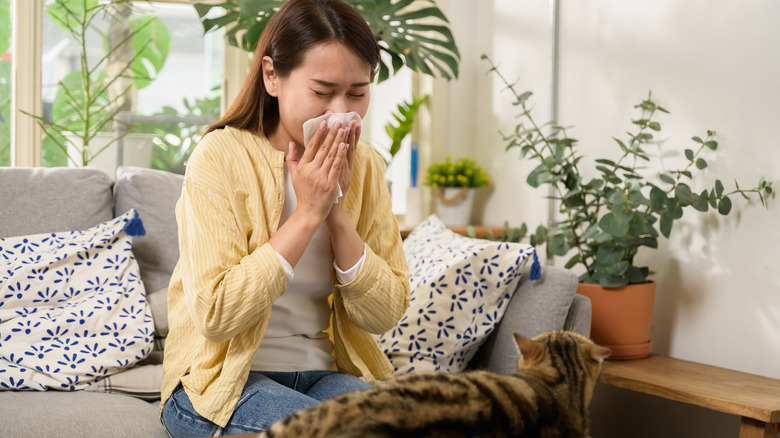Simple Ways To Allergy-Proof Your Home
If you find yourself sneezing and wheezing a lot inside of your home, have a runny nose, or are experiencing mouth, throat, eye, and ear irritation, you may suffer from indoor allergies. There are many common causes of indoor air pollution and allergies — mold, dust mites, and pet dander are all potential sources of your allergy symptoms.
To allergy-proof your home, you'll need to take steps to eliminate and prevent these allergens and irritants as much as possible. It shouldn't come as a shock to you that this starts with maintaining a good cleaning routine. Work to reduce clutter in your home and spend time vacuuming, sweeping, and dusting on a regular basis to prevent allergens from building up. Ideally, use a vacuum with a HEPA filter to ensure you can collect those small particles as much as possible. Clean upholstery, carpet, and fabric thoroughly to eliminate dust mites and any pet dander that's present. You should also be sure to wash your bedding often to prevent dust and allergens from building up. To minimize future buildup, it's a good idea to put bedding, such as pillows and mattresses, inside dust-proof covers and invest in hypoallergenic bedding materials.
If you suffer from indoor allergies, you may also want to keep some areas, such as the bedroom, pet-free. Bathing pets weekly can also help reduce allergies. Finally, check for mold growth in the home as well. Be mindful of any spots of moisture and fix them as needed. If you spot any mold, take steps to eliminate it and work hard to prevent it from coming back again.
Improving indoor air quality to reduce allergy symptoms
There are various useful tools that can help you remove dust and allergens and improve your home's indoor air quality. First, make sure to regularly use your air conditioner. This can help to improve air circulation, provide ventilation, and filter the air through the built-in AC filters. Also, be sure to open windows and doors often to improve ventilation, and use your bathroom's exhaust fan to keep the air fresh.
In addition to using a vacuum with a HEPA filter, consider placing air purifiers with HEPA filters in areas of your home where you spend a lot of time and where dust is likely to be present. Although there are pros and cons to dehumidifiers, it's also a good idea to use one in your home if you're dealing with indoor allergies. This can help to reduce moisture in areas such as the bathroom and basement and prevent the growth of mold and mildew.
Also, be sure to replace all AC and dehumidifier filters. You may want to check the manufacturer's recommendations when doing so, but as a general rule, aim to change filters once a month. The more you can improve ventilation and the air quality in your home, the less you'll find that you're experiencing indoor allergy symptoms.

